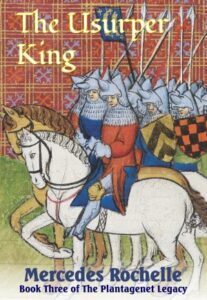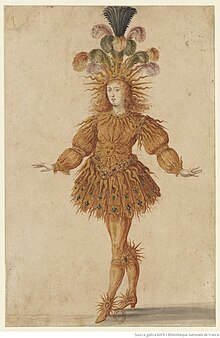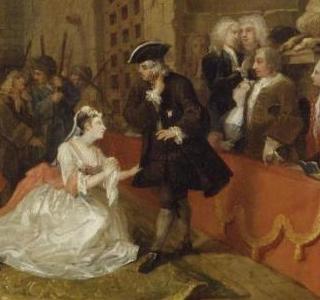Deborah Swift's Blog, page 4
February 17, 2025
The Lifeline by Deborah Swift – New edition #WW2 #HistoricalFiction
THE LIFELINE was published five years ago and over that time gathered up more than a thousand fantastic reviews from readers. Unfortunately when it republished, due to some sort of Amazon glitch it lost all its reviews and is now showing only 13. I can’t seem to get the reviews back, even though other books I republished got their reviews transferred without any problem. I’ve contacted four different helplines, and none of them were able to solve this conundrum. If you haven’t read this one yet, then do give it a try as it could use some love! It’s on KindleUnlimited too!
Here are its reviews on Goodreads

A heart-pounding WW2 historical saga that you won’t be able to put down!
From the heart of Norway to Shetland in Scotland, one couple fight to overthrow the Nazis…
 1942, Nazi-occupied Norway
1942, Nazi-occupied NorwaySchoolteacher Astrid Dahl has always kept out of trouble. But when she is told to teach the fascist Nazi curriculum, she refuses and starts a teacher’s rebellion, persuading eight thousand teachers to go on strike.
The Germans arrest her, and terrified of what punishment her trial might bring, she is forced to go into hiding.
Astrid’s boyfriend, Jørgen Nystrøm, has joined the Norwegian Resistance. When his cover is blown he escapes to Shetland where he is taken on as crew for the Shetland Bus; a dangerous clandestine operation of small fishing boats that supply arms and intelligence to war-torn Norway.
In Shetland, hearing Astrid is in trouble, Jørgen sets off through enemy waters to meet her.
But the Nazis have a spy on Shetland and have been tipped off about the Shetland Bus.
With the enemy in pursuit from both directions, will Astrid and Jørgen be able to survive and find each other?
THE LIFELINE is a moving war & military saga following the separate stories of a young man and woman in the Second World War as they fight for freedom in Norway and the Shetland Islands in Scotland.
The post The Lifeline by Deborah Swift – New edition #WW2 #HistoricalFiction first appeared on Deborah Swift.January 29, 2025
The Usurper King by Mercedes Rochelle #CoffeePotBookClub #Review #HistoricalFiction
About the book:
From Outlaw to Usurper, Henry Bolingbroke fought one rebellion after another.
First, he led his own uprising. Gathering support the day he returned from exile, Henry marched across the country and vanquished the forsaken Richard II. Little did he realize that his problems were only just beginning. How does a usurper prove his legitimacy? What to do with the deposed king? Only three months after he took the crown, Henry IV had to face a rebellion led by Richard’s disgruntled favorites. Worse yet, he was harassed by rumors of Richard’s return to claim the throne. His own supporters were turning against him. How to control the overweening Percies, who were already demanding more than he could give? What to do with the rebellious Welsh? After only three years, the horrific Battle of Shrewsbury nearly cost him the throne—and his life. It didn’t take long for Henry to discover that that having the kingship was much less rewarding than striving for it.
 REVIEW
REVIEW
I hadn’t read either of the previous two books and had only a sketchy idea of the history behind this novel. I feared I might be lost and confused, but I’m happy to say I found this novel gripping and interesting and so I highly recommend this journey into the story of Henry Bolingbroke who becomes Henry IV – King of England from 1399.
Henry came to the English throne by force. He made his cousin, Richard II, abdicate, and then seized the crown himself. This started the famous dispute between the House of Lancaster and the House of York. In The Usurper King the plot features the rivalry between Henry and the Percy family and Harry Hotspur who I dimly remembered from reading the Shakespeare play at school. This tension is what drives the narrative and provides two characters with conflicting interests. The novel is impeccably researched from the real history and this shows. Mercedes Rochelle is a re-enactor and this is evident in all the little details that she provides that immerse the reader in the time. Even though Henry is the usurper, the author did a good job of eliciting our sympathy for him as a character. There is a lot of trouble and unrest in this book as you might expect and the author also does a good job of distinguishing who’s on who’s side. I recommend this book to anyone interested in the Plantagenets and this period of history, and it was a joy to see these historical events unfold on the page.
BUT THE BOOK The Usurper King: https://books2read.com/u/3nkRJ9
 Mercedes Rochelle
Mercedes RochelleMercedes Rochelle is an ardent lover of medieval history, and has channeled this interest into fiction writing. Her first four books cover eleventh-century Britain and events surrounding the Norman Conquest of England. The next series is called The Plantagenet Legacy about the struggles and abdication of Richard II, leading to the troubled reigns of the Lancastrian Kings. She also writes a blog: HistoricalBritainBlog.com to explore the history behind the story. Born in St. Louis, MO, she received by BA in Literature at the Univ. of Missouri St.Louis in 1979 then moved to New York in 1982 while in her mid-20s to “see the world”. The search hasn’t ended! Today she lives in Sergeantsville, NJ with her husband in a log home they had built themselves.
Find Mercedes – Website | Blog | Facebook | Twitter | BookBub | Amazon Author Page | Goodreads
The post The Usurper King by Mercedes Rochelle #CoffeePotBookClub #Review #HistoricalFiction first appeared on Deborah Swift.
January 28, 2025
The Lotus House by Ann Bennett #Philippines #WW2 #CoffeePotBookClub
“What an amazing read!!! I didn’t expect this to be a roller coaster of emotions, suspense, and mystery but it was everything!!… The characters were amazing, the story will keep you wanting more and more until the end.”
~ Goodreads Reviewer, 5*
“So captivating, I was on edge while flipping through the pages as fast as I could… Truly heartwarming… Emotional, heartbreaking … I loved this… A must read… Amazing.”
~ Page Turners, 5*

A gripping, emotional drama of love and courage set in the Philippines during WW2.
1960: Nancy Drayton, an American nurse living on Lake Sebu, is visited by a stranger who hands her some faded letters, given to her by a dying man. Reading them transports Nancy back to the terror of the war years.
1941: When Nancy’s world is blown apart by the devastating attack on Pearl Harbor, she volunteers to travel to the Philippines to serve at the front. She soon finds herself working in a field hospital on the Bataan Peninsula in the thick of the fighting, experiencing the horrors of war first hand.
When tending to some wounded men, she meets Captain Robert Lambert, and they become close. But the Japanese are closing in on Bataan, and when the US surrenders, they are driven apart.
As Robert struggles to survive the horrors of the Bataan Death March and the brutality of captivity in a prison camp, Nancy too finds herself a captive, fighting for her life. Will they survive to find one another again or will the forces of war keep them apart?
If you enjoy compelling historical fiction, you’ll love this sweeping story of love and war. Perfect for fans of Kristen Hannah, Dinah Jeffries and Victoria Hislop.
BUY THE BOOK https://mybook.to/lotushouse
ABOUT THE AUTHOR Ann Bennett
 Ann Bennett is a British author of historical fiction. Her first book, Bamboo Heart: A Daughter’s Quest, was inspired by researching her father’s experience as a prisoner of war on the Thai-Burma Railway and by her own journey to uncover his story. It won the Asian Books Blog prize for fiction published in Asia in 2015, and was shortlisted for the best fiction title in the Singapore Book Awards 2016.
Ann Bennett is a British author of historical fiction. Her first book, Bamboo Heart: A Daughter’s Quest, was inspired by researching her father’s experience as a prisoner of war on the Thai-Burma Railway and by her own journey to uncover his story. It won the Asian Books Blog prize for fiction published in Asia in 2015, and was shortlisted for the best fiction title in the Singapore Book Awards 2016.That initial inspiration led her to write more books about WWII in Southeast Asia – Bamboo Island: The Planter’s Wife, A Daughter’s Promise, Bamboo Road: The Homecoming, The Tea Planter’s Club, The Amulet, and The Fortune Teller of Kathmandu. Along with The Lotus House, published in October 2024, they make up the Echoes of Empire Collection.
Ann is also the author of The Oriental Lake Collection – The Lake Pavilion and The Lake Palace, both set in British India during the 1930s and WWII, and The Lake Pagoda and The Lake Villa, set in French Indochina during the same period. A Rose in the Blitz – the first in the Sisters of War series and set in London during WWII, was published in March 2024.
The Runaway Sisters, USA Today bestselling The Orphan House, The Child Without a Home and The Forgotten Children are set in Europe during the same era and are published by Bookouture. Her latest book, The Stolen Sisters, published on 29th November 2024, is the follow-up to The Orphan List (published by Bookouture in August this year) and is set in Poland and Germany during WWII.
A former lawyer, Ann is married with three grown up sons and a granddaughter and lives in Surrey, UK. For more details, please visit www.annbennettauthor.com
Find Ann on these links:
Website • Twitter • Facebook • BookBub • Instagram
Amazon Author Page • LinkedIn • Goodreads
The post The Lotus House by Ann Bennett #Philippines #WW2 #CoffeePotBookClub first appeared on Deborah Swift.January 24, 2025
Love Habit by TL Clark #MM #TudorRomance #HistoricalFiction #15thCentury #Monastery
 Two monks in love…
1485: Paul timidly enters Darenth Priory to avoid marriage. In good faith, he expects to live out his days in chaste devotion to God. But there is temptation lurking within the monastery walls.For there is also another novice, Luke, who both resembles and sings like an angel. Is he a test? A gift?Paul must decide.Can these two young men venerate love alongside liturgy? Or will they be cast out?A religious yet irreverent story awaits.NB This is a work of fiction about what may have been, told in first person POV; a positive, realistic LGBTQ+ story which probably happened many times over and deserves now to be shared in the light with love.As England moves from the Medieval to the Tudor era, attitudes may be different than expected, even for Benedictine monks in the Catholic Church.NB There are scenes of a mature nature, which require patience to discover. Includes improper use of candles.TL Clark is also the author of How to Write A Historical Novel and Love it.
Two monks in love…
1485: Paul timidly enters Darenth Priory to avoid marriage. In good faith, he expects to live out his days in chaste devotion to God. But there is temptation lurking within the monastery walls.For there is also another novice, Luke, who both resembles and sings like an angel. Is he a test? A gift?Paul must decide.Can these two young men venerate love alongside liturgy? Or will they be cast out?A religious yet irreverent story awaits.NB This is a work of fiction about what may have been, told in first person POV; a positive, realistic LGBTQ+ story which probably happened many times over and deserves now to be shared in the light with love.As England moves from the Medieval to the Tudor era, attitudes may be different than expected, even for Benedictine monks in the Catholic Church.NB There are scenes of a mature nature, which require patience to discover. Includes improper use of candles.TL Clark is also the author of How to Write A Historical Novel and Love it.
Got a historical novel inside you desperate to get out? Discover the tactics and methods to bring it into the world.
Award-winning, best-selling author, TL Clark, shares wisdom from her ten years of writing and publishing experience. Written in her signature warm, informal style, you’ll find this book as fun and approachable as it is useful.
If you’re new to writing, this book will:
~ Show you which aspects of history to research before you ‘put pen to paper’.
~ Give easy step-by-step prompts and tasks to set you on the right path for your writing journey through time.
~ Guide you through your options once you’ve successfully typed “The End”.
~ Provide tips on writing, formatting, publishing, and advertising.
~ Supply you with an easy-to-follow checklist of self-publishing tasks.
Find the author here: Instagram Twitter TikTok Blog
The post Love Habit by TL Clark #MM #TudorRomance #HistoricalFiction #15thCentury #Monastery first appeared on Deborah Swift.The World Turned Upside Down by Seth Irving Handaside #USHistory #CoffeePotBookClub
“The World Turned Upside Down” takes readers on an exhilarating journey through one of history’s most transformative periods.
This masterful work of historical fiction follows the audacious British-American colonists, known as the Founders, as they boldly rise against the mightiest empire of their time: England. Their unprecedented struggle challenged the status quo and reshaped the foundation of global politics and human rights, ushering in the era of democracy. As the narrative unfolds with rich, immersive detail and dynamic characters, the story poses a profound question: after securing their hard-won liberty, could they preserve and nurture the fragile promise of a new world?
This compelling tale captures the spirit of revolution and the enduring quest for freedom.
 READ AN EXCERPT!
READ AN EXCERPT!
“I thought you would like a narrative,” wrote Alex to Reverend Knox, “of my late involvement in a battle.”
“Asked by the hard-drinking Lord Sterling to help man some cannon, I went to Long Island on Monday morning, August 26.
Quickly, we learned by the return of some of the scouting parties that the English were in motion and coming up the Island with several fieldpieces.
Three thousand men received orders, chiefly from the Pennsylvania and Maryland troops, to attack them on their march. About sunrise, they meet up with a very extensive body of them.
The assault from this flanking force began amid a clear and cloudless sky at nine A.M., the 27th. This unopposed force under Howe outnumbered the whole American army. It was now in the rear of the American detachments under Sullivan and Sterling, who rushed forward to defend the direct western routes.
Yours truly and my men, with few cannons to defend ourselves, set up in an orchard.
On the enemy’s approach, we gave them a very severe fire.
We kept this up for a considerable time until we were near surrounded.
We then retreated to the woods.
The overweight and rheumatic Lord Sterling, who commanded, immediately drew us up in a line and offered them intense battle in an authentic English taste.
The British army then advanced within about three hundred yards of us and began a heavy fire from their cannon and mortars, for both the balls and shells flew very fast, now and then taking off ahead.
Ordered not to fire until the enemy came within fifty yards; the patriots stood their fire coolly and firmly, but the British declined to come any nearer, although treble in number.
In this situation, my men and I stood from sunrise to midnight, the enemy firing upon us most of the time.
By a route never dreamed of, the main body of the British army surrounded the rebels and drove within our lines. Ordered to withdraw, we fought through the enemy on every field and road. We retreated a quarter of a mile before being fired upon by an advanced party of the enemy. In our rear, we received fire from their artillery. Our men fought with more than Roman courage, and I am convinced they would have stood until they were shot down. We forced the advanced party, which first attacked us, to give way. Through an opening, we got a passage down to the side of a marsh, seldom before waded over, which we passed, and then swam a narrow river, all the time exposed to the enemy’s fire.
The whole of our battalion’s right-wing, thinking it impossible to pass through the marsh, attempted to force their way through the wood. They were almost to a man killed or taken.
The Maryland battalion has lost two hundred and fifty-nine men, amongst whom are twelve officers: Captains Veazey and Bowie, the first certainly killed; Lieuts. Butler, Sterrett, Dent, Coursey, Muse, Prawl; Ensigns Coats and Fernandes; who are killed, or who prisoners, is yet uncertain. Many of the officers lost their swords and guns
BUY THE BOOK Universal Buy Link
Historium Press Edition Links: Hardcover Paperback
ABOUT THE AUTHOR: Seth Irving Handaside
 Growing up in Putnam County in the town of Putnam Valley, named after General Israel Putnam, Seth Irving Handaside walked its roads.He explored the hills and valleys that American rebels tread. But, he often thought, what would have done when the head of the state, King George III of England, ignored his rights and the rule of law?Would he have marched to the tune of the revolution and been in a regiment commanded by General Putnam or sided with the loyalists?Fascinated by American history since elementary school, politics runs in his veins. He has spent the last ten years researching and reading about the founding fathers and settled on six men, three boys not yet twenty, and three Virginians who risked having their necks stretched to make the American dream a reality.
Growing up in Putnam County in the town of Putnam Valley, named after General Israel Putnam, Seth Irving Handaside walked its roads.He explored the hills and valleys that American rebels tread. But, he often thought, what would have done when the head of the state, King George III of England, ignored his rights and the rule of law?Would he have marched to the tune of the revolution and been in a regiment commanded by General Putnam or sided with the loyalists?Fascinated by American history since elementary school, politics runs in his veins. He has spent the last ten years researching and reading about the founding fathers and settled on six men, three boys not yet twenty, and three Virginians who risked having their necks stretched to make the American dream a reality.Author Links:
Website • Facebook • InstagramAmazon Author Page • Publisher’s Author Page • GoodreadsThe post The World Turned Upside Down by Seth Irving Handaside #USHistory #CoffeePotBookClub first appeared on Deborah Swift.January 6, 2025
Silver Anniversary for Harold the King by Helen Hollick #CoffeePotBookClub #1066

 Two men. One crown.England, 1044. Harold Godwinesson, a young, respected earl, falls in love with an ordinary but beautiful woman. In Normandy, William, the bastard son of a duke, falls in love with power.In 1066 England falls vulnerable to the fate of these two men: one, chosen to be a king, the other, determined to take, by force, what he desires. Risking his life to defend his kingdom from foreign invasion, Harold II led his army into the great Battle of Hastings in October 1066 with all the honour and dignity that history remembers of its fallen heroes.In this beautifully crafted tale, USA Today bestselling author Helen Hollick sets aside the propaganda of the Norman Conquest and brings to life the English version of the story of the man who was the last Anglo-Saxon king, revealing his tender love, determination and proud loyalty, all to be shattered by the desire for a crown – by one who had no right to wear it.Praise for Harold The King / I Am The Chosen King:“Helen Hollick has it all! She tells a great story, gets her history right, and writes consistently readable books.”~ Bernard Cornwell“A novel of enormous emotional power.”~ Elizabeth Chadwick“Thanks to Hollick’s masterful storytelling, Harold’s nobility and heroism enthral to the point of engendering hope for a different ending…Joggles a cast of characters and a bloody, tangled plot with great skill.”~ Publisher’s Weekly“Don’t miss Helen Hollick’s colourful recreation of the events leading up to the Norman Conquest.”~ Daily Mail“An epic re-telling of the Norman Conquest.”~ The Lady“If only all historical fiction could be this good.”~ Historical Novel Society ReviewBuy the Book!Harold The King is available to read on #KindleUnlimited.Universal Ebook Buy Link of Harold The KingUniversal Paperback Link UK VersionUniversal Paperback Link US Version
Two men. One crown.England, 1044. Harold Godwinesson, a young, respected earl, falls in love with an ordinary but beautiful woman. In Normandy, William, the bastard son of a duke, falls in love with power.In 1066 England falls vulnerable to the fate of these two men: one, chosen to be a king, the other, determined to take, by force, what he desires. Risking his life to defend his kingdom from foreign invasion, Harold II led his army into the great Battle of Hastings in October 1066 with all the honour and dignity that history remembers of its fallen heroes.In this beautifully crafted tale, USA Today bestselling author Helen Hollick sets aside the propaganda of the Norman Conquest and brings to life the English version of the story of the man who was the last Anglo-Saxon king, revealing his tender love, determination and proud loyalty, all to be shattered by the desire for a crown – by one who had no right to wear it.Praise for Harold The King / I Am The Chosen King:“Helen Hollick has it all! She tells a great story, gets her history right, and writes consistently readable books.”~ Bernard Cornwell“A novel of enormous emotional power.”~ Elizabeth Chadwick“Thanks to Hollick’s masterful storytelling, Harold’s nobility and heroism enthral to the point of engendering hope for a different ending…Joggles a cast of characters and a bloody, tangled plot with great skill.”~ Publisher’s Weekly“Don’t miss Helen Hollick’s colourful recreation of the events leading up to the Norman Conquest.”~ Daily Mail“An epic re-telling of the Norman Conquest.”~ The Lady“If only all historical fiction could be this good.”~ Historical Novel Society ReviewBuy the Book!Harold The King is available to read on #KindleUnlimited.Universal Ebook Buy Link of Harold The KingUniversal Paperback Link UK VersionUniversal Paperback Link US Version
 First accepted for traditional publication in 1993, Helen Hollick became a USA Today Bestseller with her historical novel, The Forever Queen (titled A Hollow Crown in the UK) with the sequel, Harold the King (US: I Am The Chosen King) being novels that explore the events that led to the Battle of Hastings in 1066.Her Pendragon’s Banner Trilogy is a fifth-century version of the Arthurian legend, and she writes a nautical adventure/supernatural series, The Sea Witch Voyages. She has also branched out into the quick read novella, ‘Cosy Mystery’ genre with her Jan Christopher Mysteries, set in the 1970s, with the first in the series, A Mirror Murder, incorporating her, often hilarious, memories of working as a library assistant. The fifth in the series, A Memory Of Murder, was published in May 2024.Her non-fiction books are Pirates: Truth and Tales and Life of A Smuggler. She is currently writing about the ghosts of North Devon, and Jamaica Gold for her Sea Witch Voyages.Recognised by her stylish hats, Helen tries to attend book-related events as a chance to meet her readers and social-media followers, but her ‘wonky eyesight’ as she describes her condition of Glaucoma, and severe arthritis is now a little prohibitive for travel.She lives with her family in an eighteenth-century farmhouse in North Devon with their dogs and cats, while on the farm there are showjumper horses, fat Exmoor ponies, an elderly Welsh pony, geese, ducks and hens. And several resident ghosts.Connect with Helen: Website • Blog • Twitter / X • Facebook • Bluesky Amazon Author Page • NewsletterThe post Silver Anniversary for Harold the King by Helen Hollick #CoffeePotBookClub #1066 first appeared on Deborah Swift.
First accepted for traditional publication in 1993, Helen Hollick became a USA Today Bestseller with her historical novel, The Forever Queen (titled A Hollow Crown in the UK) with the sequel, Harold the King (US: I Am The Chosen King) being novels that explore the events that led to the Battle of Hastings in 1066.Her Pendragon’s Banner Trilogy is a fifth-century version of the Arthurian legend, and she writes a nautical adventure/supernatural series, The Sea Witch Voyages. She has also branched out into the quick read novella, ‘Cosy Mystery’ genre with her Jan Christopher Mysteries, set in the 1970s, with the first in the series, A Mirror Murder, incorporating her, often hilarious, memories of working as a library assistant. The fifth in the series, A Memory Of Murder, was published in May 2024.Her non-fiction books are Pirates: Truth and Tales and Life of A Smuggler. She is currently writing about the ghosts of North Devon, and Jamaica Gold for her Sea Witch Voyages.Recognised by her stylish hats, Helen tries to attend book-related events as a chance to meet her readers and social-media followers, but her ‘wonky eyesight’ as she describes her condition of Glaucoma, and severe arthritis is now a little prohibitive for travel.She lives with her family in an eighteenth-century farmhouse in North Devon with their dogs and cats, while on the farm there are showjumper horses, fat Exmoor ponies, an elderly Welsh pony, geese, ducks and hens. And several resident ghosts.Connect with Helen: Website • Blog • Twitter / X • Facebook • Bluesky Amazon Author Page • NewsletterThe post Silver Anniversary for Harold the King by Helen Hollick #CoffeePotBookClub #1066 first appeared on Deborah Swift.
December 16, 2024
The Three Deaths of Justice Godfrey by L C Tyler #review #murdermystery
REVIEW
I love this series – there is so much to enjoy in the period. In this novel poor Justice Godfrey has met his end in three different ways – bludgeoned, stabbed and strangled – thus leading John Grey to wonder if it could be suicide and some people (who might benefit from the Will) want it covered up, as in those days to take your own life was a crime.
A little research and googling the name led me to realise that this is actually based on a real Restoration case, which all added to the interest. Titus Oates and two other men fabricated evidence of what became known as the Popish Plot to murder Charles II and put his Roman Catholic brother James, the Duke of York (later King James II), on the throne.
And of course, when I got to the end there were all the notes from Mr Tyler telling me all I needed to know about what was fact and what was fiction. This novel makes the most of the history, with some insisting the Catholics dunnit, and others deciding they hadn’t. The very dodgy Titus Oates, with his even dodgier background, is a pivotal character in the story. As usual, Grey’s wife, Aminta, has her own ideas and is responsible for chivvying her husband to try things that move the plot forward.
The narrative is laced with a good amount of dry wit, which makes the books great fun to read..
This will be enjoyed by Tyler’s fans and also by those who love a twisty murder mystery based on real events. Unravelling a murder alongside John Grey is always a great pleasure and this witty and absorbing mystery is first class entertainment. Highly recommend.
ABOUT THE BOOK
October 1678. Sir Edmund Berry Godfrey, respected London wood monger and Court Justice, sets out from his house, early one foggy morning, in his second-best coat. Then he vanishes. Six days later, his body is discovered in a ditch near Primrose Hill. He has been severely beaten, strangled and stabbed through the chest – killed three times, in fact. There’s no doubt somebody wanted him dead. The cash in his pockets however is still there. And, in spite of the wet weather and muddy roads, his clothes are dry and his shoes are spotlessly clean.
People are quick to connect his killing with the role Godfrey has played in exposing a Catholic plot to kill the King. His name is, after all, an anagram of ‘dy’d by Rome’s reveng’d fury’. Parliament, whipped into a frenzy by the conspirator Titus Oates, demands a suitable perpetrator is found. But it soon becomes clear that Godfrey had not merely offended the Catholics. And he had, some weeks before, predicted his own death with uncanny accuracy.
Magistrate John Grey is summoned from his Essex village to investigate an increasingly inexplicable crime and to prevent some innocent men from being hanged as a regrettable political necessity.
BUY THE BOOKFind L C Tyler on his website: https://www.lctyler.com/
The post The Three Deaths of Justice Godfrey by L C Tyler #review #murdermystery first appeared on Deborah Swift.December 12, 2024
The Royal Menagerie of Versailles by Peggy Joque Williams #CoffeePotBookClub #17thCentury
Le Ménagerie Royale de Versailles
King Louis XIV, the monarch who ruled France throughout most of the 17th century and is a central character in Courting the Sun: A Novel of Versailles, had his own zoo at Versailles. He called it Le Ménagerie Royale.
In this excerpt from Courting the Sun, Sylvienne takes Etienne, a young shoemaker who wants to marry her, to visit the menagerie at Versailles.
[Etienne] tied the horses to a hitching post outside the gate, and we made our way inside in silence. The Menagerie was a large domed pavilion surrounded by a series of enclosures fanning out like the spaces between spokes of a wheel. Etienne’s eyes grew wide with astonishment as we approached the first pen.
Around a pond stood several dozen pink birds with long necks and long spindly legs, some standing only on one leg, the opposing limb pulled up tight under their bodies. The tall birds chattered noisily as ducks and swans waddled and swam among them. Watching them helped quell my agitation. “They are flamants roses,” I said.
“I’ve read of them. They come from the Spanish Americas.”
I let him take my hand as we strolled to the next paddock, a grassy area with zebras grazing. Ostriches clustered nearby pecking at the ground, several peering over the fence at us. Another enclosure held an elephant tossing sand and dirt over its back with its trunk. Large clumps of its dung baked in the sun. Next to it, a glass wall surrounded a large tree with thick branches upon which playful, screeching monkeys romped.

But the animals I most wanted Etienne to see were still to come. A lion with a majestic mane lay sprawled across a large flat rock in its enclosure. On the ground at his feet, sat a lioness panting in the sun. In the next enclosure a golden-coated leopard, its fur marked with black rosettes, paced back and forth, eyeing us with wary interest. The last pen housed a tiger which paced in and out through its shed door, in and out, in and out.
“Aren’t they marvelous? Did you ever think you would see such animals in your life?” I looked up at Etienne, expecting awe that mirrored my own. Instead, he was quiet, almost sullen. “What’s wrong?”
“To be penned up like this. It must be awful for them.”
“They know no other life.”
“They must have come from somewhere.” He reached out and ran a finger down one of the vertical bars separating them from us. “Trapped. Unable to come and go as they wish, to live the life they were meant to live. Not unlike you and I.”
“What do you mean? You came here of your own accord.”
He shrugged. “Not any more than you did.”
I sucked in a breath. It was true. I had felt I was accepting a prized invitation; but no one refuses a summons from the King. And no one leaves court without the King’s permission. I didn’t know how to respond. I didn’t have to. He was already striding out of the compound.
“Etienne! Wait!” I chased after him.
He stopped near the horses. “Sylvienne, this whole place, Versailles, it’s nothing more than one large…what did you call it? A menagerie. Everyone here lives their lives solely at the pleasure of the King. Doesn’t that bother you?”
“I never thought about it that way.”
He lifted me up onto Phoebe’s saddle.
“And anyway, what choice do I have?”
“That’s my whole point.” He put his foot in the stirrup and swung his leg over Jolie’s back. “A life without choice is no life at all.”
I used the idea of the menagerie to show how Etienne feels about being at Versailles. He is a talented shoemaker from Amiens, the same town from which Sylvienne came. Etienne is in love with Sylvienne, but she is a beautiful young woman fawned over by the king and others in the royal inner circle. Etienne is an outsider, a craftsman, brought to Versailles upon Sylvienne’s recommendation; and he resents his situation.

Louis XIV by Hyancinth Rigaud
Louis began construction on the menagerie in 1663; it took about five years to complete. He collected exotic animals and birds from all over the world, and he invited painters, zoologists, taxidermists and visitors of all types to view his collection. Many of the animals were offered as diplomatic gifts from countries seeking Louis’ good graces. The elephant was apparently a gift from Dom Pedro II, King of Portugal, and the lions and tiger were given by various Arab princes.
Louis started a trend with his menagerie. A number of palaces and noble houses throughout Europe began to build their own menageries modeled after Louis’—and thus was born the concept of the zoo. The menagerie at Versailles went into decline after Louis’ death in 1715; it was destroyed altogether during the French Revolution in the 1790s.
The Ménagerie at Versailles is an apt metaphor for the situation in which Sylvienne and Etienne find themselves in Courting the Sun. They were curiosities kept at court for the pleasure of the King. Outwardly, it might look as if they were free to come and go, but in the time of the Sun King, one did not refuse an invitation to court, and one did not leave without the king’s express permission.

The Book – Courting the Sun

“A rich journey through 17th century France in all its aspects—its bucolic countryside, the still-unmatched splendor of the court of Louis XIV, and the struggling French colony in Canada.”~ Margaret George, New York Times bestselling author of Elizabeth I, The Autobiography of Henry VIII & The Memoirs of Cleopatra
France, 1670. On her sixteenth birthday, Sylvienne d’Aubert thinks her dream has come true. She holds in her hands an invitation from King Louis XIV to attend his royal court. However, her mother harbors a longtime secret she’s kept from both her daughter and the monarch, a secret that could upend Sylvienne’s life.
In Paris, Sylvienne is quickly swept up in the romance, opulence, and excitement of royal life. Assigned to serve King Louis’s favorite mistress, she is absorbed into the monarch’s most intimate circle. But the naïve country girl soon finds herself ill-prepared for the world of intrigue, illicit affairs, and power-mongering that takes place behind the shiny façade of Versailles.
This debut historical novel from Peggy Joque Williams captures the vibrancy and quandaries of 17th century life for a village girl seeking love and excitement during the dangerous reign of the Sun King.
Images:
Ménagerie Royale de Versailles – Attribution: Artist: D’Aveline (French artist, late 17th and early 18th century), Public domain, via Wikimedia Commons.
Ostriches sketch – Rijksmuseum, CC0, via Wikimedia Commons
Louis XIV as Apollo in the Ballet Royal de la Nuit (1653) Wikimedia Commons
Portrait of Louis XIV – Hyacinthe Rigaud, Public domain, via Wikimedia Commons

November 27, 2024
The Paris Portrait by Heidi Eljarbo #CoffeePotBookClub #Paris #Art

Fabiola stumbles upon a clue that indicates a royal portrait went missing almost two hundred years ago. Is this true, or is there substance to the rumor?
Paris, France, 1973.
After an enjoyable but dusty road trip, Fabiola and her friends, Pippa and Cary, arrive in a small village on the outskirts of Paris to spend a few days with Fabiola’s brother Eivind and his family.
On their first evening there, Eivind shows Fabiola an ancient recipe book he bought at an auction. The book is filled with old writing, and he asks Fabiola to decipher the pages. After the others have gone to bed, she spends hours reading and is gripped by the last pages that have nothing to do with recipes for baked goods and stews. Certain the author was a famous portrait artist at the time of the French Revolution, Fabiola and her friends set out on a treacherous investigation, dodging murderers and thieves to learn the truth.
Versailles, France, 1789.
Élisabeth Louise Vigée Le Brun— portraitist and close friend of the extravagant queen of France, Marie Antoinette—has already painted thirty portraits of the queen. Her contemporaries compare her to the old Dutch masters, calling her one of the greatest portrait painters of her time.
But outside on the streets, Paris is becoming more perilous with every day that passes. Madame Le Brun would be a fool to think the rumors of a revolution will pass, and aristocratic life will continue as before.
Amid the turmoil, she paints one final portrait of Marie Antoinette, knowing well her association with the queen could cause her to be arrested or executed. As chaos and riots in Paris turn to violence, Madame Le Brun flees with her young daughter, hoping her royal friend and the portrait will be safe.
This is Heidi Eljarbo’s third dual timeline novel about Norwegian art historian Fabiola Bennett—a captivating spin-off from her much-loved Soli Hansen Mysteries.
BUY THE BOOK! https://books2read.com/u/3nPAjB
This title is available to read on #KindleUnlimited.
About Heidi Eljarbo
 HEIDI ELJARBO grew up in a home full of books, artwork, and happy creativity. She is the author of historical novels filled with courage, hope, mystery, adventure, and sweet romance during challenging times. She’s been named a master of dual timelines and often writes about strong-willed women of past centuries.
HEIDI ELJARBO grew up in a home full of books, artwork, and happy creativity. She is the author of historical novels filled with courage, hope, mystery, adventure, and sweet romance during challenging times. She’s been named a master of dual timelines and often writes about strong-willed women of past centuries.After living in Canada, six US states, Japan, Switzerland, and Austria, Heidi now calls Norway home. She lives with her husband on a charming island and enjoys walking their Wheaten Terrier in any kind of weather, hugging her grandchildren, and has a passion for art and history.
Sign up for her newsletter:
https://www.heidieljarbo.com/newsletter!
Author Links: Website • Twitter • Facebook • Instagram • Pinterest
BookBub • Amazon Author Page • Goodreads

The post The Paris Portrait by Heidi Eljarbo #CoffeePotBookClub #Paris #Art first appeared on Deborah Swift.
November 25, 2024
Women in the Early Theatre – Elizabeth Knepp by Deborah Swift #HistoricalFiction
Elizabeth Knepp, sometimes known as Mary Knepp, was borm as Elizabeth Carpenter and married her husband Christopher in 1659. He was known as a ‘jockey’ a common word then for someone who had a profession to do with horses,, so he was probably a horse dealer, with his business near Smithfield Market in London. Elizabeth I gave her the nickname ‘Bird’ in my novel as she loved to sing, and there are so many other Marys and Elizabeths in Pepys’ diary.
There are 108 references to Mrs Knepp in Pepys’ diary. Actresses in those days were always known as ‘Mrs’ whether they were single or married. In the seventeenth century, status was always conferred on a woman by the man. Thus Pepys always refers to his wife Elisabeth as ‘my wife’. Although this seems in our ears to diminish her, in fact this is not an insult; it was designed to confer on her a status not accorded to his servants who were referred to as Dolly, or Deb, or Jane. The theatre was the one place where this did not hold sway – female actors were always called ‘Mrs’ as a mark of respect.

Pepys first met Elizabeth Knepp on 6th December 1665; and he described her as:
‘pretty enough, but the most excellent, mad-humoured thing, and sings the noblest that I ever heard in my life.’
Christopher Knepp, her husband, on the other hand, is described as:
‘an ill, melancholy, jealous-looking fellow’.
So grew the first inkling of a conflict I could use in my novel. Christopher Knepp seemed to me the sort of man who would definitely not approve of his wife taking to the stage!
Pepys had an absolute passion for the theatre, and his diary for 1666-68 is full of references to the theatre and particularly to Mrs Knepp, including mentions of their amorous flirtations, and passages about how much he enjoyed their musical evenings and especially her singing. My impression from the diary is that they genuinely liked each other, and this was one of the things that attracted me to writing about her.

The professional actress was a new phenomenon in the 1660s. Up until the seventeenth century, women had no reflections of themselves in entertainment; all female roles were played by boys. The first female on the English stage was Margaret ‘Peg’ Hughes, who played Desdemona in a production of Othello in 1660. Only two months before, the role had been played by a boy, and the thought of this upheaval in the theatre led me to create the character of Stefan. Being an actress in this era was a way of both gaining and losing power –a woman was able to behave on stage in a powerful way, but also women were still seen as commodities; an attraction or novelty to please those that mattered at the time, i.e men.
In this period the theatre was one of the few ways for women to transcend social boundaries. Through Pepys’ diaries we can witness Nell Gwynne, rising through society from bawd’s daughter to mistress of a king. Evidence shows Nell Gwynne certainly had a mind of her own and used her position on stage to advance herself, and of course now she has achieved some sort of national status. In Pepys’ diary, Elizabeth Knepp is invited to musical soirées with Pepys and his civil-servant friends. Being in the theatre conferred a ‘celebrity’ status not available to other women, and just as today, celebrities were sought out by the upper echelons of society.

Elizabeth Knepp played major and minor roles in a range of productions of the 1660s and 1670s, including the famous role of Lady Fidget in Wycherley’s The Country Wife at Drury Lane in 1675. Beyond the scope of my novel, she is thought to have been a mistress of Sir Charles Sedley, who was a notorious rake and libertine, part of the ‘Merry Gang’ gang of courtiers which included the Earl of Rochester and Lord Buckhurst. She probably provided Pepys with backstage gossip and inside insights into a world he was avid to know more about. She supplied him with the theatrical and social gossip of the day, and when the theatres were closed down for the plague, took part in evening entertainments alongside him, as an equal.
 BUY THE BOOK
BUY THE BOOK
Amazon link mybook.to/EntertainingMrPepys
Kobo link https://www.kobo.com/gb/en/ebook/entertaining-mr-pepys-1
Waterstones link https://www.waterstones.com/book/entertaining-mr-pepys/deborah-swift/9781786154156
The post Women in the Early Theatre – Elizabeth Knepp by Deborah Swift #HistoricalFiction first appeared on Deborah Swift.


